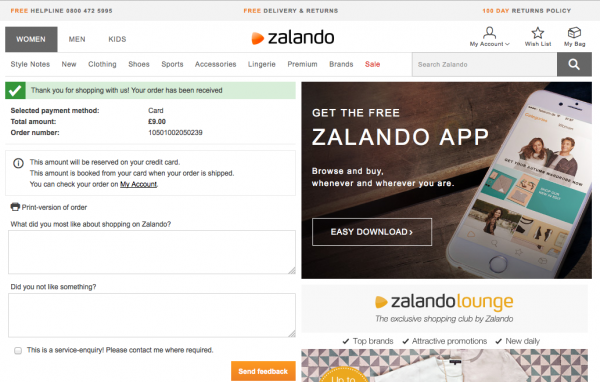6 ways to capture priceless customer insights with in-the-moment feedback

January 20, 2016
In every customer interaction there is a moment of truth, a point when customers decide to take a course of action that has either a negative or positive impact on your business. The better you understand how your customers feel at these moments of truth, the better you can own these moments.
Here are some of our favorite ways to gather real-time feedback at different points in a customer’s journey.
1) The moment they finished their order…
From your customers you can learn many precious things — such as what convinced them to order or what almost prevented them from becoming your customer.
A great moment to ask for their feedback is on the “Thank You“ page. Right after they have finished their order, the moments of joy and frustration they have experienced during the buying process are still fresh in their heads.
The feedback might provide the arguments you need to convince your other prospects or show you in which areas you need to improve and what you need to communicate more clearly on your website.
2) When they engage with your business on the phone…
Anyone who knows us a little knows that we are huge fans of open-ended questions in user surveys, and — this might surprise you— it also holds true for mobile surveys.
Obviously smartphone users are less inclined to type in long answers, but usually their short feedback — often not more than one or two words — gives us valuable insights we could never capture with multiple-choice questions.
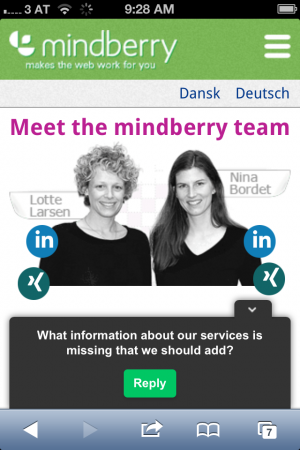
Feedback survey on our own mobile site with Hotjar
Contrary to surveys on desktop devices, we typically only ask one open-ended question on mobile devices, which we sometimes combine with additional, easier-to-answer multiple choice questions.
3) Right after they unsubscribe from your newsletter…
Although this may seem like an unlikely place, brands can learn a lot from users’ unsubscribe requests.
Short surveys can help find out why these subscribers are leaving to prevent future opt-outs (is it a matter of content?, frequency? are they simply turning to another channel?, etc.).
Another option is to offer users alternatives (with some type of preference center) in an attempt to retain them.
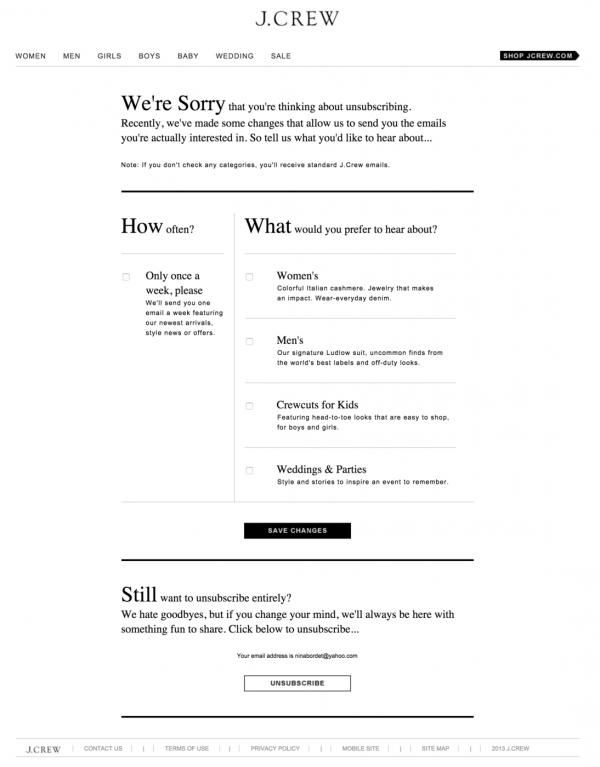
Beautiful example of an “Unsubscribe” page (J.CREW) offering alternatives in an attempt to retain customers.
J.CREW tries to avoid potential losses by offering to reduce email frequency and to select preferred content to make future newsletters more relevant.
4) When they get “social” with you…
Most of your Facebook fans are not customers, but they have already demonstrated some interest in your brand by liking your page — that makes them the perfect targets if you want to learn more about your prospects.
Implementing surveys takes only a couple of minutes and it’s easy to quickly get a large number of respondents.
Check out this blog post to find out more on how to run surveys on Facebook.
5) When visitors can’t find what they are looking for…
Sometimes user research uncovers that prospects cannot find what they are looking for. They are interested in the service, but cannot find the product they want. In such cases adding a little on-site survey at the end of the category pages can help you find out what else you should offer and at the same time turn your visitor’s bad moment of truth into a good one.
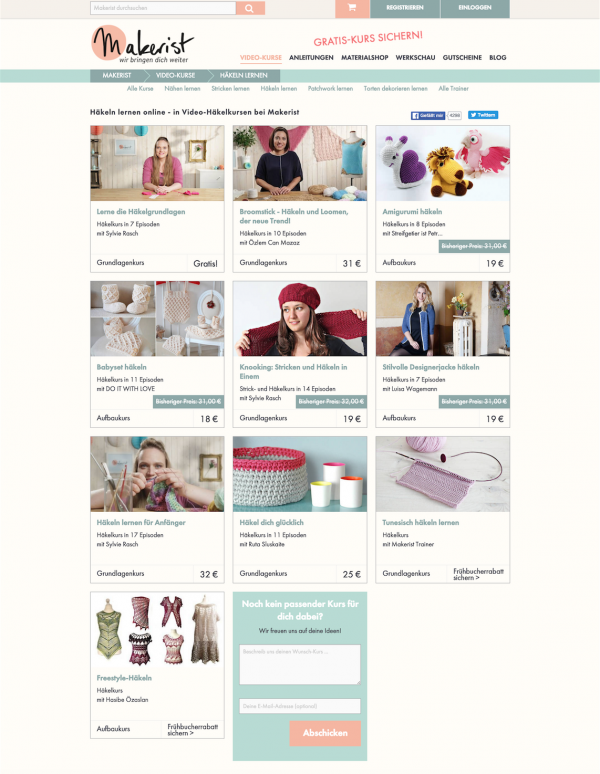
Makerist added a feedback box on the category page that lets users enter their wishes for future video tutorials. In the mint-colored box it says: “Did not find a suitable course for you? We are looking forward to getting your suggestions.” There is also an option to leave an email address.
Tip: Sometimes it makes sense to incorporate the same feedback mechanism on pages displaying zero search results.
6) The moment visitors are leaving…
We use exit surveys (e.g., from Qualaroo or Hotjar) to understand the unique intentions, needs and frustrations of visitors when leaving a page. The moment a user is abandoning a page a small survey pops up at the bottom of the page. Typically we like to ask one simple, open-ended question such as “What prevented you from ordering today?”
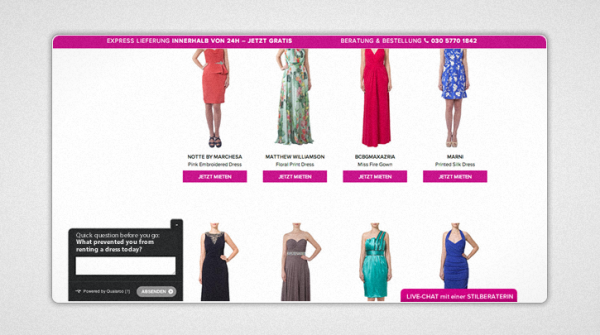
This is an example of Laremia, an online rental service for designer dresses. When someone left the category pages we asked a quick question to find out why she left the website without ordering a dress.
How we can help you better understand your customers’ moments of truth
– Subscribe to our newsletter to receive more case studies and tips that might inspire you to conduct user research on your site.
– Contact us if you’d like us to help you better understand your users and optimize your business.
PS: What techniques are you using to get feedback on the fly?
